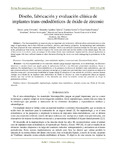
Please use this identifier to cite or link to this item:
http://ricaxcan.uaz.edu.mx/jspui/handle/20.500.11845/860Full metadata record
| DC Field | Value | Language |
|---|---|---|
| dc.contributor | 121534 | es_ES |
| dc.contributor.other | https://orcid.org/0000-0002-1513-4971 | - |
| dc.contributor.other | 0000-0002-1513-4971 | - |
| dc.coverage.spatial | Global | es_ES |
| dc.creator | Larios Cervantes, Alexis | - |
| dc.creator | Aguilera Galaviz, Luis Alejandro | - |
| dc.creator | Aceves Medina, María del Carmen | - |
| dc.creator | Gaitán Fonseca, César | - |
| dc.date.accessioned | 2019-03-26T16:57:36Z | - |
| dc.date.available | 2019-03-26T16:57:36Z | - |
| dc.date.issued | 2016-02 | - |
| dc.identifier | info:eu-repo/semantics/publishedVersion | es_ES |
| dc.identifier.issn | 2334-2501 | es_ES |
| dc.identifier.uri | http://localhost/xmlui/handle/20.500.11845/860 | - |
| dc.identifier.uri | https://doi.org/10.48779/pgd8-8r60 | - |
| dc.description | The biocompatibility in materials play an important role in dentistry, different alloys and metals have a wide range of applications, due to their different mechanical, physical and chemical properties. In implantology and endodontics has been proposed the trans-endodontic implants technique, which is an artificial extension through the root apex, anchored in the periradicular bone tissue, in order to improve the crown-root ratio and provide stability to the dental organ. The aim of this review is to shows some advantages of Zirconium Oxide trans-endodontic implant and his clinical application in dental organs who have suffered trauma or other alteration affecting the crown-root ratio endangering its permanence in the mouth. | es_ES |
| dc.description.abstract | La biocompatibilidad en los materiales dentales juega un papel importante, en la odontología, las diferentes aleaciones y metales tienen una amplia gama de aplicaciones debido a sus diferentes propiedades mecánicas, físicas y químicas. En implantología y en el área endodóntica, se ha propuesto la técnica de implantes trans-endodónticos, que son una extensión artificial a través del ápice radicular con anclaje en el tejido óseo perirradicular, con el propósito de mejorar la relación corona-raíz y proporcionar estabilidad al órgano dental. El propósito de este artículo de revisión es mostrar algunas ventajas en el diseño de un implante trans endodóntico de Óxido de Zirconio así como la aplicación clínica en órganos dentales que han sufrido un traumatismo u otra alteración que afecta la relación corona-raíz poniendo en riesgo la permanencia en boca. | es_ES |
| dc.language.iso | spa | es_ES |
| dc.publisher | Revista Iberoamericana de Ciencias | es_ES |
| dc.relation | http://www.reibci.org/feb-16.html | es_ES |
| dc.relation.uri | generalPublic | es_ES |
| dc.rights | Atribución-NoComercial-CompartirIgual 3.0 Estados Unidos de América | * |
| dc.rights.uri | http://creativecommons.org/licenses/by-nc-sa/3.0/us/ | * |
| dc.source | Revista Iberoamericana de Ciencias Vol. 3, No. 1, pp. 64-70 | es_ES |
| dc.subject.classification | MEDICINA Y CIENCIAS DE LA SALUD [3] | es_ES |
| dc.subject.other | biocompatible | es_ES |
| dc.subject.other | implantology | es_ES |
| dc.subject.other | trans-endodontic implant, crown-root ratio | es_ES |
| dc.subject.other | Zirconium Oxide | es_ES |
| dc.subject.other | alloys | es_ES |
| dc.subject.other | biocompatible | es_ES |
| dc.subject.other | implantología | es_ES |
| dc.subject.other | implante trans-endodóntico | es_ES |
| dc.subject.other | relación corona raíz | es_ES |
| dc.subject.other | Óxido de Zirconio | es_ES |
| dc.subject.other | aleación | es_ES |
| dc.title | Diseño, fabricación y evaluación clínica de implantes trans-endodónticos de óxido de zirconio | es_ES |
| dc.type | info:eu-repo/semantics/article | es_ES |
| Appears in Collections: | *Documentos Académicos*-- UA Odontología | |
Files in This Item:
| File | Description | Size | Format | |
|---|---|---|---|---|
| G Diseño y evaluacion clinica implantes.pdf | 324,82 kB | Adobe PDF |  View/Open |
This item is licensed under a Creative Commons License
